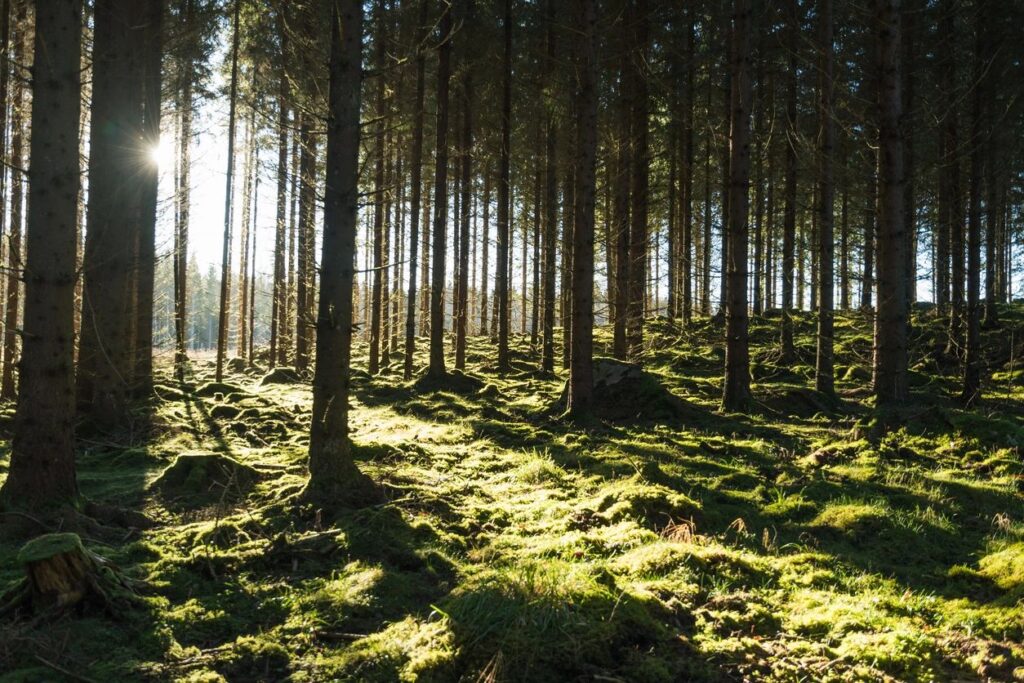Located in the Amazon River Basin, the world’s biggest tropical rainforest may be found. As large as forty-eight contiguous states, the basin encompasses nearly 40% of the South American continent.
Based on historical human activity, ecosystems and plant types in the Amazon range from rainforests to seasonal and deciduous forests, flooded forests, and savannas.
With a discharge of more than a million cubic meters per second (the world’s greatest river), the Amazon is the second-longest river on Earth. Over 1,100 tributaries make up the river, 17 of which are longer than 1000 miles, two of which are greater than the Congo River in volume. The rainforest’s lifeblood is its river system, and its history has had a significant impact on its evolution.
Ecosystems in South America
The Amazon rainforest is a collection of ecosystems in South America. It is the world’s largest tropical rainforest, covering more than 5 million sq km, and home to a highly diverse range of wildlife species.
Numerous environmental problems throughout recent history have hit the Amazon Rainforest. In the 1960s and 1970s, it suffered massive damage from the expansion of oil exploration and extraction. It has been under threat from over-intensive agricultural practices, deforestation, mining, and hydropower projects in more recent times.
The Amazon is an essential resource for Brazil, containing 20% of Brazil’s freshwater. It also helps regulate global climate patterns – a 2007 study estimated that deforestation in the Amazon accounted for around 15% of emissions worldwide and that the forest absorbs around 2 billion tons of carbon dioxide each year.
Amazon’s Place in the Globe of Rainforests -The World’s Biggest Rainforest
The Amazon rainforest is the world’s largest, more significant than the Congo Basin and Indonesian rainforests put together.
At the end of 2020, roughly 84% of the Amazon’s 629 million hectares of tree cover will be a primary forest. Congo Basin’s primary forests span 288 million hectares to put this into context. In contrast, the combined tropical regions of Australia (Papua New Guinea), Indonesia, Malaysia, and Papua New Guinea total 120 million hectares of primary forest.
History of the Amazon Rainforest-The World’s Biggest Rainforest.
When the continents were united together as part of Gondwana, the Amazon River may have flowed westward, potentially as part of a proto-Congo river system from the interior of modern-day Africa. The South American and Nazca plates collided over 15 million years ago, creating the Andes mountain range. As the Andes rose, the connectivity of the Brazilian and Guyana bedrock shields stopped the river and made a large inland sea. As the inland sea dries up and becomes a marshy, freshwater lake, marine life adapts. For example, there are more than 20 species of Stingray in the fresh waters of the Amazon, which are closely linked to those found in the Pacific Ocean.
Ice Ages and Amazon River
Ten million years ago, the Amazon River began to flow eastward through the sandstone to the west. The Amazon rainforest was born during this time. During the Ice Age, sea levels decreased, causing fast drainage of the enormous Amazon Lake, which became a river. The Central American isthmus was exposed three million years later when the ocean level fell sufficiently to expose the isthmus.
It was the Ice Ages that caused the world’s tropical rainforest to shrink in size. It is widely accepted that large swaths of the Amazon returned to savanna and montane forests, although this has been disputed (see Ice Ages and Glaciation). In the Savanna, sections of rainforest were partitioned into “islands” and separated for long enough periods to allow for genetic diversity. Even the massive Congo watershed was devoid of forests, according to delta core samples. A new forest formed as the ice ages ended, and the formerly one species had differentiated sufficiently to be designated as distinct species, contributing to the region’s remarkable variety. The river was again submerged as though it was a long, gigantic freshwater lake around 6000 years ago when sea levels increased by 130 meters.
Today’s Amazon River
With a volume of more than five times the Congo River’s or twelve times the Mississippi’s, it drains an area approximately as large as forty-eight contiguous US states today. A 300-mile wide river mouth is not uncommon at the high flood, and the Atlantic Ocean receives up to 18 billion cubic meters (635 billion cubic feet) of water every day. The release, equivalent to 209,000 cubic meters of water per second (7.3 million cubic feet per second), could provide New York City’s freshwater demands for nine years.
Due to the velocity of the stream and the sheer amount of water, Amazon River water travels 125 miles out to sea before mingling with Atlantic saline water. Early seafarers were able to drink fresh water from the ocean before seeing the South American continent.
Sediment from the Andes takes with it loads of dirt and sand, giving the river its murky whitewater look. Every day, 106 million cubic feet of sediment are deposited into the ocean. Majaro Island, a river island the size of Switzerland, was formed due to the sediment deposited near the entrance of the Amazon.
Moisture Migration
The Amazon’s effect on moisture migration goes far beyond the water that travels down the Amazon River. Transpiration is the primary means by which trees in the Amazonian rainforest release water vapor into the atmosphere. Several areas in South America receive a significant amount of rain, yet some of this moisture is transported by airflows over the whole continent. “Flying rivers” have been equated with this movement. According to one estimate, 70% of Brazil’s GDP originates from places that get rainfall supplied by the Amazon rainforest.
Innovations in the Amazon Rainforest-The World’s Biggest Rainforest
Humans have lived in the Amazon for thousands of years. Still, the rate of change has increased in the last few decades due to an increasing population, mechanized agriculture, and the region’s integration into the global economy. A wide range of Amazonian products—beef and leather, lumber and soy, oil and gas—are now shipped to China, Europe, the United States, and Russia. This change has severely impacted Amazon.
As a result, 1.4 million hectares of forest were cut in the Amazon during the 1970s due to this change from a secluded backwater to a cog in the global economy. Selective logging and forest fires have affected a much greater region.
Deforestation is a direct result of the conversion of land for livestock grazing. More than 60% of the land cleared in Brazil ends up as pasture, which can only support one head per hectare. Cattle ranching in most of the Amazon focuses more on land claims than on producing meat or leather. Market-oriented cattle production, on the other hand, has grown substantially over the past decade despite this.
Agriculture, particularly soy cultivation, has been a significant contributor to deforestation since the early 1990s. There has been a prohibition on a new forest cutting in Brazil’s soy sector since 2006. In response to a Greenpeace campaign, the moratorium got enacted.
Changes in the Amazon
There is also a large amount of forest loss in the Amazon due to mining, subsistence agriculture, dams, urban growth, agricultural fires, and lumber plantations. Deforestation is more likely in logged-over forests, even when judiciously harvested. Logging is the principal cause of forest disturbance. Logging roads open previously inaccessible forest regions to farmers and ranchers.
The Amazon’s transformation isn’t just due to deforestation. The Amazon rainforest is being severely impacted by climate change. As tropical Atlantic temperatures rise, more rain isn’t falling on the Amazon, worsening dryness and raising fire risk. According to computer simulations, most Amazon, particularly in the south, might go from rainforest to Savanna if present warming trends continue. An abrupt shift in climate might have significant ramifications for both the economy and the environment, as it could disrupt rain patterns that feed regions responsible for 70% of South America’s GDP and result in massive amounts of carbon dioxide emissions from deforestation. These emissions might exacerbate climate change.
We Must Protect The Amazon Rainforest-The World’s Biggest Rainforest
However, even though the Amazon rainforest continues to be deforested, between the mid-2000s and mid-2010s, the total pace of deforestation decreased due to a substantial slowdown in forest clearing in Brazil. However, the rate of deforestation in the region has been rapidly increasing in recent years.
Deforestation
Several causes, some of which Brazil can control and others it cannot, were implicated in the drop in Brazil’s deforestation rate from 2004 to 2012. As of 2010, Brazil has the world’s most extensive network of protected areas, mainly in the Amazon region, established in 2000. The government in 2004 to reduce deforestation established improved legal enforcement, satellite monitoring, and financial incentives for environmental compliance. An independent public prosecutors’ office in the Brazilian Amazon was essential in pursuing unlawful acts. After 2006, when large crushers halted new soy deforestation, the private sector also was engaged. Following the soy prohibition, “The Cattle Agreement,” wherein large slaughterhouses and meat producers agreed to only purchase cattle from regions where environmental regulations were being obeyed, followed by “The Cattle Agreement.”
However, in the mid-2010s, these conservation efforts in the Brazilian Amazon began to falter. Laundering livestock and a lack of financial incentives to protect forests have allowed large cow ranchers to skirt the regulations and keep landowners from changing their ways. Dismantling environmental regulations, reducing ecological law enforcement, removing conservation areas and indigenous territories of protection, encouraging a wide range of industries to expand extraction and conversion in the Amazon (mining, logging, agribusiness) were all part of the Temer and Bolsonaro Administrations. In 2019, deforestation in Brazil began to accelerate at an alarming pace.
Interesting facts of Amazon rainforest
The Earth’s lungs
Due to their role in providing more than 20% of global oxygen, the Amazon Rainforests are sometimes referred to as the “lungs of Earth.” The Amazon, which spans only 3.4 million square miles, generates more than ten times as much oxygen as the rest of the world’s landmass!
It spans over eight countries in one day-The World’s Biggest Rainforest
The Amazon rainforest spans over eight countries, and is not it amazing?
The largest rainforest in the world
What is the size of the Amazon? The Amazon Rainforest is the world’s biggest tropical rainforest, stretching over an area of roughly 2.3 million square miles (6 million square kilometers). Even though the Congo Basin and Indonesian tropical regions are more extensive, the Amazon is the largest rainforest on the planet. The Amazon contained 526 million hectares of primary forest as of 2020.
In terms of volume, the Amazon River is the largest in the world-The World’s Biggest Rainforest
By discharge, the Amazon River is the world’s most important river, with an average flow rate of around 209,000 cubic meters per second, or about 20 percent of the worldwide total. If you were to go from Shelburne, Vermont, to Houston, Texas, the river would span nearly 2,000 miles.
Indigenous tribes
The Amazon Rainforest is also home to 400–500 indigenous tribes, making it one of the most diverse ecosystems in the world. Many of these tribes have never had any contact with the outside world, proving there are still regions of the Amazon that haven’t been affected by modern civilization.
The dark forest floor-The World’s Biggest Rainforest
Most forest floors are almost dark because of the high canopies of the trees (top branches and tree leaves), allowing just around 1 percent of sunlight to get through. When it rains, the canopies are so dense that it might take 10 minutes for the water to reach the Earth.
Avoiding deforestation
In the previous 40 years, 20% of the Amazon Rainforest was deforested; this rate of deforestation is expected to continue for another 40 years. A cattle ranching in Brazil, which is home to 67% of the Amazon, is often blamed for the deforestation of the Amazon.
House of deadly creatures-The World’s Biggest Rainforest
These dangerous species include venomous snakes, toxic frogs, and even jaguars and flesh-eaters, which you should avoid at all costs when in the Amazon. If you stumbled into one of these exciting but dangerous animals, what would be your plan of action?
To conclude
Deforestation is a severe threat to the Amazon, which is why these statistics and data are so intriguing. When it comes to protecting the natural beauty of this forest, we must take immediate action.
Recommended Reads
- The Amazon Rainforest in Brazil: All You Need to Know
- Birds from the Rainforest: 12 Spectacular Species
- Gifts for a Traveler Man-15 Best Ideas
- Climate for Tropical Rainforest: All You Need to Know
- Gift for Woman Traveler: Top 15 Ideas


